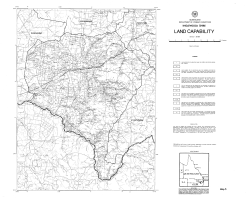
Bringing pulse revolution in India
Bringing Pulse Revolution in India Rajeev Varshney, Pooran Gaur and Sameer Kumar ICRISAT, Patancheru DAC, New Delhi, 26 Nov 2014 Priority areas 1. Promoting cultivation of early maturing, heat tolerant varieties for expanding chickpea cultivation in rice-fallows of eastern India 2. Promoting cultivation of early duration pigeonpea in high elevation and rice-fallow cropping system 3. Promoting early-maturing, drought and heat tolerant, and fusarium wilt resistant chickpea varieties in central and southern India 4. Expanding hybrid pigeonpea cultivation 5. Modernization of pulses breeding 6. Knowledge empowerment of farmers and making seeds and other inputs available 1. Promoting cultivation of early maturing, heat tolerant varieties for expanding chickpea cultivation in rice-fallows of eastern India States Rice-fallows (million ha) Chhattisgarh + MP 4.4 Jharkhand + Bihar 2.2 Odisha 1.2 West Bengal 1.7 Total 9.5 Chickpea in rice-fallows • • • Chickpea is a potential pulse crop for ricefallows A bonus crop Improves soil fertility and yield of rice Varietal traits desired for rice-fallows • Early seedling vigour • Early maturity • Reproductive stage drought and heat tolerance • Resistance to fusarium wilt States Suitable varieties Chhattisgarh + MP JG 14, Vaibhav, JG 63 Jharkhand + Bihar JG 14, KAK 2 Odisha JG 14, JAKI 9218, KAK 2, Vihar Further research needed for rice-fallows • Crop establishment (seed priming, zero till seed drills) • Nutrient management, particularly micronutrients • Development of super-early varieties (several elite lines available for testing) Zero till seeding of chickpea in Bihar Super early breeding line 2. Promoting cultivation of early duration pigeonpea in high elevation and rice-fallow cropping system Early Elite lines with high yield potential over UPAS 120 available There is a need to develop high yielding, early duration types to fit in pigeonpea-wheat cropping systems of Punjab, Haryana, Rajasthan and UP CMS and Maintainer lines have been identified in early group and hybrid breeding can be initiated to develop suitable hybrids Super early Photo insensitive and day neutral High yield potential types (33 lines) available Matures in <100 days, fits well in cropping systems Suitable for mechanization Best bet for rice-fallow 3. Early-maturing, drought and heat tolerant, and fusarium wilt resistant chickpea varieties in central and southern India Drought tolerance Early maturity Fusarium wilt resistance Heat tolerance States Suitable varieties Andhra Pradesh & Karnataka JG 11, JAKI 9218, NBeG 3, Vihar, BGD 103 Madhya Pradesh JG 14, JG 130, JG 63, JAKI 9218, KAK 2, RVG 201 Maharashtra Digvijay, Rajas, PKV 4 Research need for central and southern India Combining dry root and fusarium wilt resistance and drought and heat tolerance Dry root rot Dry root rot 8 4. Expanding Hybrid cultivation ICPH 2671, ICPH 2740 and ICPH 3762 hybrids have been commercialized in AP, Telangana, Odisha, Maharashtra, Gujarat and MP. Seed production technology has been standardized. There is a need for hands on training on maintenance of parental lines and certified seed production of hybrids. Large scale seed production has to be under taken by public and private stake holders >100,000 ha under cultivation in 2013-2014 in AP, Maharashtra, Karnataka and Odisha 9 Hybrid breeding strengthening for different agro-ecologies of India Need to focus on hands on training to breeders across the country on breeding and development of high yielding parental lines and Heterotic hybrids. Stable sources of CMS lines are available New sources like Cajanus reticulatous are to be explored for high yielding hybrids Parental lines with disease resistance and for different maturity and seed color available Molecular markers for hybrid purity assessment are available (GOT) Efforts are required to develop two line breeding approach Need for agronomic interventions for realizing full potential of the hybrid 4. Modernization of pulses breeding • Success story of marker-assisted backcrossing (MABC) for developing more drought tolerant lines in chickpea; need to target maximum elite varieties for MABC to have higher yield • Implementation of markers in routine hybrid breeding program of pigeonpea is underway; need to have markers for target traits • Use of electronic data capture and integrated breeding by partner institutes 6. Knowledge empowerment of farmers and making seeds and other inputs available • Training of farmers • Ensuring input supplies, particularly seed of improved cultivars • Farmer participatory trials for selection of improved technologies by the farmers Success story from Andhra Pradesh on adoption of short duration varieties During the past 12 years (2000 - 2011) • 3.6-fold increase in area (163,000 to 580,000 ha) • 2.1-fold increase in yield (583 to 1241 kg/ha) • 7.6-fold increase in production (95,000 to 720,000 t) • >90% area under improved early cultivars (JG 11, JAKI 9218, KAK 2, Vihar) Thank you! ICRISAT is a member of the CGIAR Consortium
© Copyright 2025















